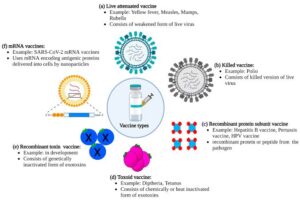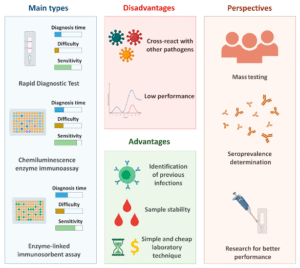Back to: MICROBIOLOGY 100 LEVEL
Welcome to class!
You’re doing amazingly well on your learning journey! Every time you show up, you’re building your knowledge and becoming more confident in understanding the science that keeps us healthy. Today, we’re looking at something you’ve likely heard about often—vaccines. But did you know that there are different types of vaccines, each made in a special way to train your immune system to fight diseases? We’ll focus on three major types: live, inactivated, and subunit vaccines.
Types Of Vaccines (Live, Inactivated, Subunit)
Vaccines are one of the most powerful tools we have to prevent diseases. They work by training the immune system to recognise and respond quickly to certain germs, without causing illness.

Let’s understand how the three major types differ:
Live Attenuated Vaccines
These vaccines use a weakened (attenuated) form of the actual germ (virus or bacteria). Because the germ is weak, it can’t cause disease in healthy people, but it’s still strong enough to stimulate the immune system.
They provide long-lasting protection with just one or two doses.
They are very effective, but not suitable for people with weak immune systems.
Examples:
Measles, Mumps, and Rubella (MMR) vaccine
Yellow fever vaccine
Oral polio vaccine (OPV)
Think of it like this: You’re shown a “criminal” who’s too weak to fight, but you memorise his face so well that if he ever returns stronger, you’ll recognise and stop him immediately.
Inactivated Vaccines
These vaccines use germs that have been killed or inactivated with heat or chemicals. They cannot cause disease, even in people with weaker immunity.
They are very safe but may need booster shots to maintain protection.
They trigger the immune system without risk of the disease spreading.
Examples:
Inactivated polio vaccine (IPV)
Rabies vaccine
Hepatitis A vaccine
Picture it like this: You’re shown a picture of the criminal—not the real person. You don’t interact with him, but you still remember his face and how to respond if he ever comes around.
Subunit Vaccines
These vaccines contain only specific parts of the germ—like its protein or sugar—just enough to trigger an immune response.
They are very safe, especially for people with weakened immune systems.
Sometimes need multiple doses to build strong immunity.
Examples:
Hepatitis B vaccine
Human papillomavirus (HPV) vaccine
COVID-19 protein-based vaccines (like Novavax)

Think of it like this: You’re shown only the criminal’s hat or badge, but it’s unique enough for you to remember and recognise him in the future.
Summary
- Live attenuated vaccines use a weakened version of the germ and offer strong, lasting immunity (e.g. MMR, Yellow fever).
- Inactivated vaccines use germs that have been killed and are very safe, but may need boosters (e.g. Rabies, IPV).
- Subunit vaccines use only parts of the germ (like proteins) and are very safe, even for people with weaker immunity (e.g. Hepatitis B, HPV).
- All vaccines aim to train the immune system to recognise and fight disease without making you sick.
- The type of vaccine chosen depends on the disease, the population, and the level of protection needed.
Evaluation
- What is the main difference between live and inactivated vaccines?
- Give two examples of diseases prevented by subunit vaccines.
- Why do inactivated vaccines often need booster doses?
- Which type of vaccine is safest for people with weakened immune systems?
Vaccines are one of the most important discoveries in medicine, and now you understand how they work to protect lives. Keep believing in your ability to learn and grow—Afrilearn is proud to be part of your journey. See you in the next exciting class!
